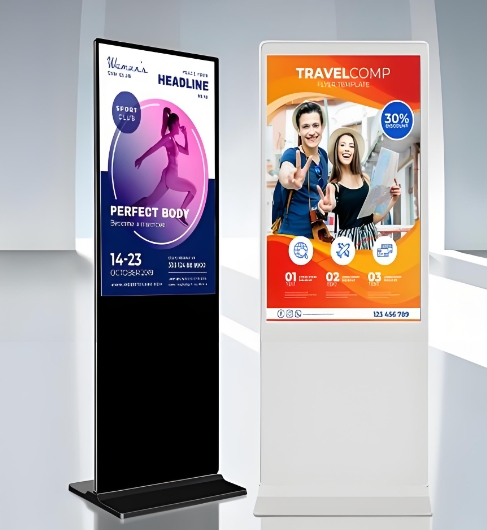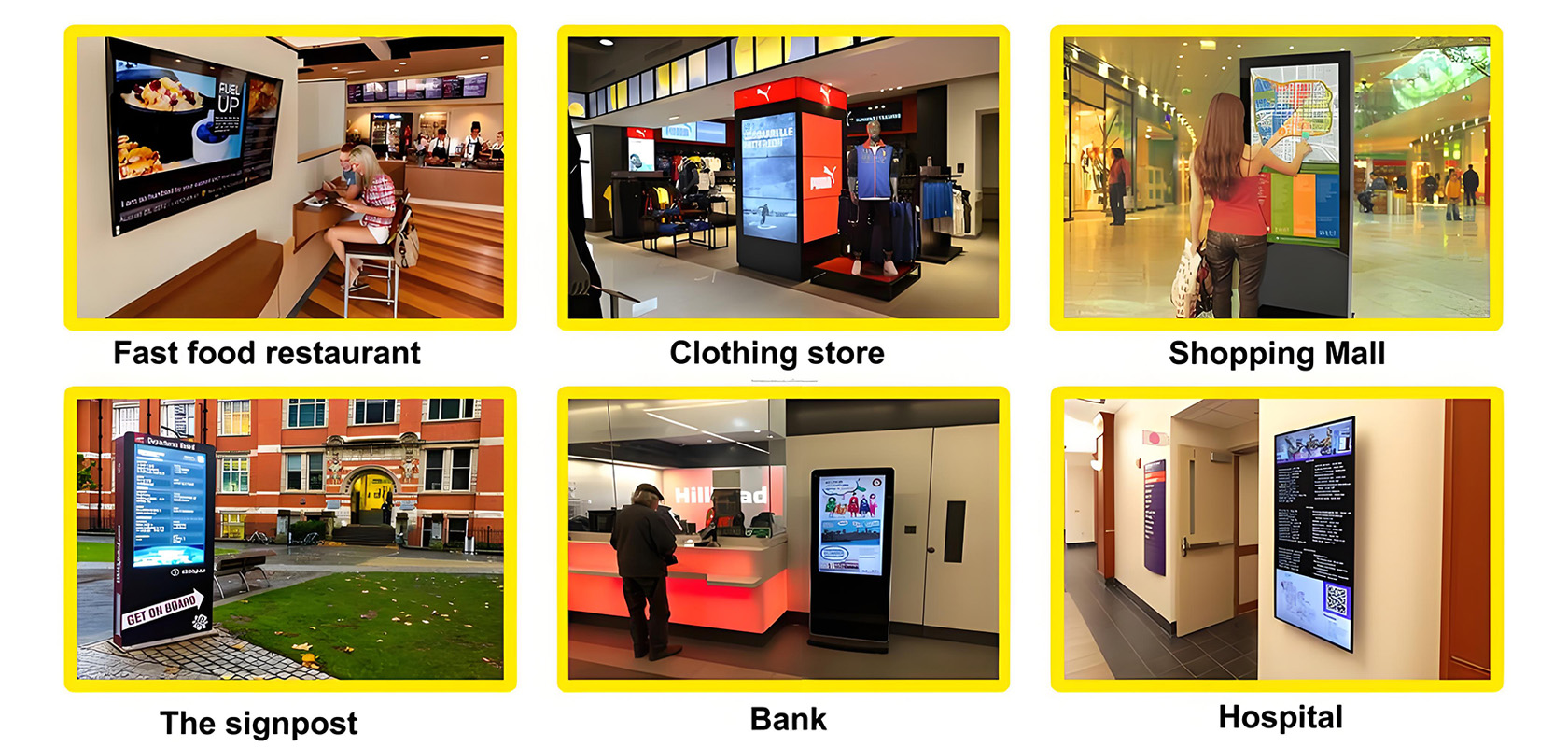
Overview of Digital Signage in Healthcare
Why Digital Signage is Important for Hospitals
Enhancing Patient Experience
Improving Communication
Streamlining Operations
Increased Efficiency and Cost-Effectiveness
Wayfinding Digital Signs
Patient Information Displays
Emergency Alerts and Notifications
Digital Directories
Interactive Touchscreen Displays
Real-Time Content Management
Remote Content Updates
Customization and Branding Options
Providing Clear Directions and Information
Engaging and Comforting Patients
Educating Patients on Health and Wellness
Strengthening Hospital Identity
Promoting Hospital Services and Specialties
Informing Visitors About Hospital Initiatives
Integration with Hospital Information Systems (HIS)
Connecting Digital Signage to Electronic Health Records (EHR)
Using Digital Signage with Patient Flow Management
Initial Setup and Cost Considerations
Technical Maintenance and Updates
Content Relevance and Frequency
Features to Look for in Digital Signage Software
Cloud-Based vs. On-Premise Solutions
Scalability and Flexibility
Importance of Real-Time Emergency Alerts
Digital Signage for Public Health Announcements
Proper Placement and Visibility
Consistent and Clear Messaging
Monitoring and Analytics
Case Study 1: Improving Patient Flow in a Large Hospital
Case Study 2: Enhancing Patient Education in a Community Clinic
Recap of Digital Signage Benefits for Hospitals
Future of Digital Signage in Healthcare
What is the main benefit of digital signage in hospitals?
How can digital signage improve patient navigation in hospitals?
What type of content can be displayed on hospital digital signage?
Is digital signage easy to manage in a hospital setting?
How does digital signage contribute to hospital safety?
Article:

Digital signage is revolutionizing the healthcare industry, offering hospitals and healthcare facilities an innovative way to communicate with patients, visitors, and staff. Hospitals are large, bustling environments, and effective communication is crucial for ensuring a smooth experience for everyone involved. Digital signage solutions are more than just digital billboards; they’re powerful tools that provide real-time information, enhance patient engagement, and even improve operational efficiency.
In this article, we will explore the many benefits and uses of digital signage in hospitals, examine the key features of effective systems, and discuss best practices for successful implementation.
A hospital visit can often be stressful, and digital signage can play a significant role in making the experience more comfortable for patients. With clear and easily accessible information displayed on digital screens, patients are able to quickly find their way to departments, understand wait times, and receive health-related tips. This reduces confusion and frustration, making the visit feel smoother and more manageable.
Effective communication is essential in healthcare. Digital signage offers hospitals the ability to communicate important messages instantly to staff, patients, and visitors. From wayfinding and signage to real-time health updates, it ensures that everyone receives the information they need at the right time.
With the ability to update content remotely and in real-time, hospitals can ensure that information displayed is always current and accurate. This not only improves patient and visitor satisfaction but also helps streamline internal operations by keeping employees informed and reducing the need for paper-based communication.
Digital signage eliminates the need for printed materials, reducing paper waste and the associated costs. Content can be updated easily and quickly, ensuring that the hospital remains dynamic and adaptable to changing needs without the delays or expenses that come with traditional signage methods.
Hospitals are often large and complex, which can make it difficult for patients and visitors to find their way around. Wayfinding digital signage offers real-time, interactive maps and directions, guiding people to their destination quickly and easily. These systems are particularly valuable in large hospitals with multiple wings, departments, and buildings.
Digital signage can be used to keep patients informed about wait times, doctor availability, and other important information. These displays can also be used to educate patients about their health conditions, treatment options, or hospital policies.
In case of emergencies, digital signage is an effective way to communicate vital information to both patients and staff. Emergency alerts can be displayed instantly across the hospital’s digital network, providing clear instructions on evacuation routes or other critical actions.
Hospitals can use digital directories to display information about departments, doctors, and hospital services. These systems are more interactive than traditional paper directories, allowing users to search and filter through the information they need.
Interactive displays are one of the most popular types of digital signage used in hospitals. These touchscreens allow patients, visitors, and staff to interact with the system, search for information, and navigate the hospital without needing assistance.
With digital signage, content can be updated instantly to reflect the most current information. Whether it’s wait times, visitor guidelines, or staff announcements, hospitals can ensure that everyone is always in the loop with minimal effort.
Hospital staff can manage digital signage content remotely through a centralized system, which means no need to manually change information on each display. This helps reduce labor costs and ensures consistency across all signage.
Hospitals can customize their digital signage displays to align with their brand identity. From the colors and logos to the type of content displayed, digital signage offers flexibility to reflect the hospital’s unique culture and messaging.
Clear communication is vital in hospitals, and digital signage makes it easy for patients and visitors to understand where they need to go. Whether it's directions to the emergency room or details about the latest visiting hours, digital displays make finding information quick and easy.
Hospitals can use digital signage to display calming messages, inspirational quotes, or even entertainment content to make patients feel more comfortable. This can help reduce anxiety, especially in areas like waiting rooms, where patients may experience long wait times.
Digital signage also serves as a great tool for patient education. Hospitals can display information about preventive care, healthy lifestyle choices, and even procedures that patients may need to undergo. This helps to improve patient outcomes by promoting awareness and knowledge.
Hospitals are increasingly using digital signage to strengthen their brand image. Digital displays can showcase the hospital’s achievements, services, and values, providing patients and visitors with a sense of pride and trust in the institution.
Digital signage offers a dynamic way to promote a hospital's specialties and services. Whether it’s a new service or a highly qualified surgeon, digital signage provides an ideal platform for showcasing these offerings to patients and visitors.
Hospitals can use digital signage to inform visitors about new initiatives, health programs, and upcoming events. By keeping the community informed, hospitals can build trust and strengthen relationships with patients and families.
Digital signage can be integrated with hospital information systems, ensuring seamless communication across all departments. This enables real-time updates on patient appointments, test results, and other critical information, improving efficiency.
By integrating with EHR systems, digital signage can display important patient information, such as appointment reminders and follow-up care instructions, in real time. This ensures patients stay informed and engaged throughout their healthcare journey.
Hospitals can use digital signage to manage patient flow more effectively. Displays can show wait times, available rooms, and other pertinent information, ensuring that patients and staff are always aware of the current situation.
While digital signage offers many benefits, the initial setup can be costly. Hospitals need to invest in hardware, software, and installation, which may require a significant budget. However, the long-term cost savings and improved operational efficiency make it a worthwhile investment.
Like any technology, digital signage systems require regular maintenance and updates. Hospitals need to ensure they have the necessary technical resources to manage the system and keep it running smoothly.
To be effective, digital signage content must be relevant, engaging, and updated regularly. Hospitals need to create a content strategy that ensures all displays feature current and meaningful information for patients, visitors, and staff.
When selecting digital signage software, hospitals should prioritize features like user-friendly interfaces, real-time updates, content scheduling, and robust analytics. These features ensure that hospitals can efficiently manage their signage system and make data-driven decisions.
Hospitals can choose between cloud-based or on-premise digital signage solutions. Cloud-based systems offer flexibility and remote management, while on-premise solutions may offer more control over data and security.
Hospitals should choose a digital signage solution that is scalable and flexible. As hospitals expand, they need systems that can grow with them and adapt to changing needs.
In emergencies, such as natural disasters or security threats, digital signage becomes a critical tool for communicating with patients, visitors, and staff. Real-time alerts can guide people to safety and provide important instructions quickly.
Hospitals can use digital signage to communicate public health messages, such as vaccination schedules, outbreak alerts, or health tips. This helps promote public health and safety within the hospital community.
To maximize the effectiveness of digital signage, it’s important to place displays in high-traffic areas where they’ll be easily visible to patients, visitors, and staff. Common locations include waiting areas, hallways, and entrances.
Clear, concise messaging is key to effective digital signage. Hospitals should ensure that all information displayed is easy to understand and free of clutter.
Monitoring digital signage performance through analytics allows hospitals to track how well their content is performing. By reviewing engagement metrics and feedback, hospitals can refine their digital signage strategies for optimal impact.
One hospital implemented digital signage to improve patient flow by displaying real-time wait times in various departments. This reduced patient anxiety, increased satisfaction, and helped manage expectations.
A community clinic used digital signage to educate patients about preventive care, which led to higher patient engagement and improved health outcomes.
Digital signage solutions for hospitals offer significant benefits, from enhancing patient experience to improving communication and streamlining operations. With the ability to provide real-time information, improve branding, and integrate with other hospital systems, digital signage is an essential tool for modern healthcare facilities. As hospitals continue to embrace technology, digital signage will play an increasingly important role in shaping the future of healthcare.
The main benefit is improved communication. Digital signage helps hospitals share real-time, relevant information with patients, staff, and visitors, enhancing the overall experience and streamlining operations.
Digital signage provides clear directions and interactive maps, helping patients easily find their way to different departments and services within the hospital.
Content can range from wayfinding maps and wait times to educational videos, health tips, emergency alerts, and promotional messages about hospital services.
Yes, digital signage can be managed remotely through a centralized system, making it easy for hospitals to update content in real time without needing physical access to the displays.
Digital signage can display real-time emergency alerts and public health announcements, helping to ensure patient and visitor safety during emergencies and health crises.
We are a digital signage supplier, welcome to inquire about product prices and solutions.
Current article link: https://www.lcdkiosk.com/news/1370.html

Tel
